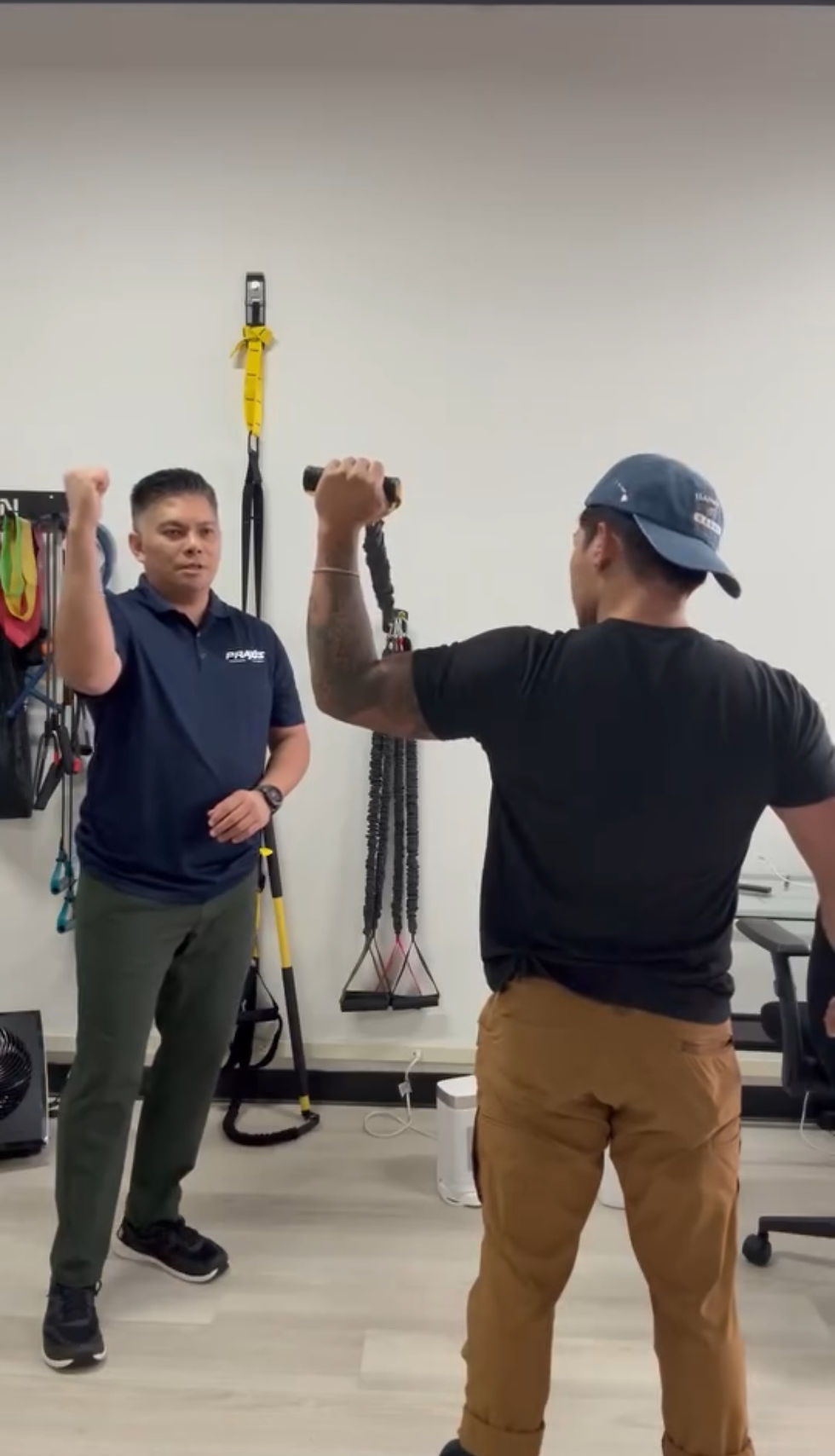Understanding Rotator Cuff Tears in CrossFit: Causes, Risks, and Prevention
- Mark Jamantoc

- May 8
- 3 min read
CrossFit has exploded in popularity over the past decade, offering high-intensity, functional training that pushes athletes to their limits. But with its demanding workouts comes an increased risk of injury—particularly to the shoulders. Among these, rotator cuff tears are one of the most common and concerning for CrossFit athletes.
In this blog post, we’ll break down the prevalence, causes, and prevention of rotator cuff tears in the CrossFit community, so you can train smarter, recover better, and stay in the game.
How Common Are Rotator Cuff Injuries in CrossFit?
While comprehensive national statistics are limited, several studies highlight how prevalent shoulder injuries are in CrossFit:
Shoulder injuries account for 6.7% to 40.6% of all reported CrossFit-related injuries.
In a study of 187 CrossFit participants, 23.5% reported shoulder injuries over a six-month period.
Among those with shoulder injuries, nearly half had partial tears of the supraspinatus tendon, one of the main components of the rotator cuff.
These findings underscore the high mechanical demands CrossFit places on the shoulder joint.
Why Do Rotator Cuff Injuries Happen?
Rotator cuff injuries in CrossFit typically result from repetitive stress, poor technique, and overuse. Here are the most common culprits:

1. Overhead Movements
Exercises like snatches, overhead squats, handstand push-ups, and push jerks place significant strain on the rotator cuff and supporting structures.
2. Technique Breakdown from Fatigue
Fatigue is a natural part of high-volume workouts, but when it leads to form breakdown, the shoulder becomes more vulnerable to acute or chronic injury.
3. Overtraining and Inadequate Recovery
Without sufficient rest, soft tissues—like the rotator cuff tendons—don’t have time to recover, leading to microtrauma, tendonitis, or tears.
Returning to CrossFit After a Rotator Cuff Injury
The good news? Recovery is very achievable. A recent study showed that 100% of CrossFit athletes who underwent arthroscopic rotator cuff repair returned to sport around nine months after surgery. However, some athletes did report reduced performance and ongoing scapular movement issues.
This highlights the importance of gradual progression and individualized rehab protocols post-injury.
How to Prevent Rotator Cuff Tears in CrossFit
Prevention starts with awareness and smart training strategies. Here’s what every CrossFit athlete should consider:
Perfect your technique, especially with overhead lifts
Gradually increase load and volume to build tissue tolerance
Incorporate rotator cuff and scapular stabilizer strengthening (e.g., external rotation, prone T’s/Y’s)

Build in rest and recovery days to avoid overuse
Consider movement screenings or assessments with a physical therapist if you notice shoulder fatigue or pain

Final Thoughts
Rotator cuff injuries don’t have to end your time in the gym. With the right prevention strategies, training mindset, and care when injuries arise, you can stay strong and resilient in your CrossFit journey. If you're dealing with shoulder pain or recovering from a tear, consult a physical therapist experienced in sports rehab to get back on track—safely and confidently.
References
Mehrab M, de Vos R-J, Kraan GA, Mathijssen NMC, Weir A. Injury incidence and patterns among Dutch CrossFit athletes. Orthop J Sports Med. 2017;5(12):2325967117745263. doi:10.1177/2325967117745263
Weisenthal BM, Beck CA, Maloney MD, DeHaven KE, Giordano BD. Injury Rate and Patterns Among CrossFit Athletes. Orthop J Sports Med. 2014;2(4):2325967114531177.
Silva JJ, Hartigan DE, Tranovich MJ, et al. Rate of Return to CrossFit Training After Arthroscopic Management of Rotator Cuff Tear. Orthop J Sports Med. 2020;8(4):2325967120911039.
Your-Shoulder.com. CrossFit Shoulder Injuries – Causes and Prevention. Retrieved from: https://your-shoulder.com/crossfit-shoulder-injuries/
The Barbell Physio. Common Causes of Fitness Athlete Shoulder Injuries. https://thebarbellphysio.com/common-causes-of-fitness-athlete-shoulder-injuries/





Comments